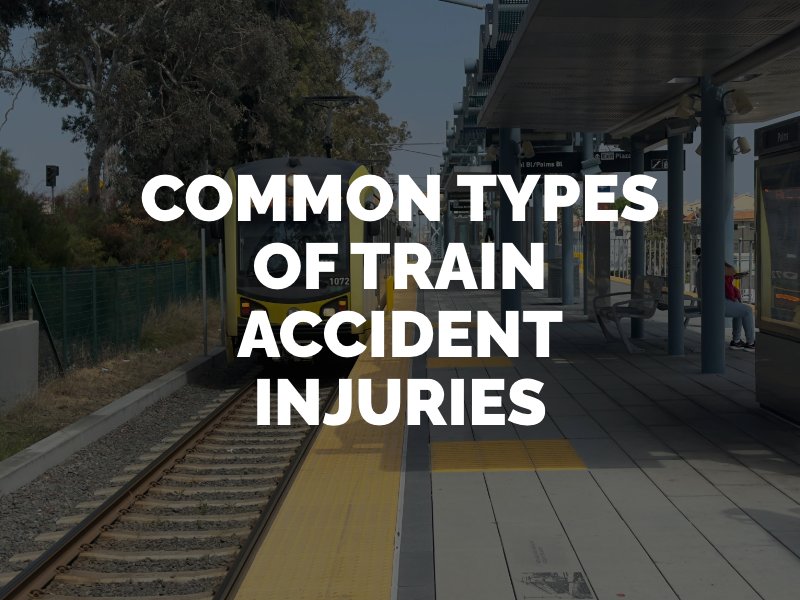Common Types of Train Accident Injuries
Thousands of Californians rely on trains such as the LA Metro and Amtrak for daily commutes and travel. While train accidents are not nearly as common as car accidents, many still occur annually. According to the National Safety Council, 995 railway deaths occurred in the U.S. in 2023. Train accidents have the potential to cause many significant and life-threatening injuries.

Traumatic Brain Injuries
Train accidents can result in severe injuries due to a lack of safety features in place to keep passengers safely in their seats. A lack of seat belts, for instance, can lead to passengers being thrown about the cab of the train. If a passenger strikes his or her head on an object inside of the train, such as on a stanchion or seat, this could lead to a traumatic brain injury.
Brain injuries such as concussions can cause debilitating symptoms. Examples include persistent headache, nausea or vomiting, dizziness, loss of balance, motor dysfunction, blurred vision, personality changes, mood swings, fatigue or trouble sleeping, seizures, coma, and permanent brain damage.
Spinal Cord Injuries
The neck and spine can suffer various injuries in a train accident. One common injury is whiplash, which affects the soft tissues of the neck if they are jerked rapidly backward and forward due to the forces of a collision. Other examples include fractured vertebrae, spinal concussion, spinal compression, severed spine, disk injuries or herniation, nerve damage, and back muscle sprains and strains.
Bone Fractures
A train passenger could suffer one or multiple broken bones from an impact against the victim’s body. Broken bones may include skull fractures, jaw fractures, chest and rib fractures (which can lead to a punctured lung), hip fractures, and broken limbs or digits. The outcome of a broken bone will depend on the location and severity of the break.
Soft-Tissue Injuries
The soft tissues (muscles, ligaments, tendons and skin) can sustain a variety of injuries due to blunt-force trauma, puncture wounds, tears or burns. Examples include:
- Cuts and lacerations
- Bruises and contusions
- Sprains and strains
- Ligament tears
- Dislocations
- Joint injuries
- Nerve damage
- Burn injuries
Soft-tissue damage can affect the joints of the knees, wrists and ankles, potentially impacting future mobility.
Catastrophic Injuries
A train accident injury could be considered a catastrophic injury if it will affect the victim’s daily life or physical capabilities for the foreseeable future. Catastrophic injuries associated with train accidents include:
- Multiple or compound bone fractures
- Permanent paralysis
- Brain damage
- Amputations or loss of limb
- Hearing or vision loss
- Third-degree burn injuries
- Internal injuries and organ damage
- Crush injuries
- Significant scarring or disfigurement
- Wrongful death
In addition to physical harm, injury lawyers in Los Angeles know train accident victims may also experience psychological suffering and mental health issues due to immense trauma and fear during a train accident.
When to Contact a Train Accident Lawyer
Train accidents in California are often the result of negligence, or someone’s failure to exercise proper care. If a train company, conductor, maintenance crew, employee, the government, a product manufacturer or another party caused your injuries, you could be eligible for financial compensation for your medical bills, lost wages and more.
Seeking maximum compensation for your losses may require assistance from an experienced Los Angeles train accident attorney. A lawyer will be able to put your case together using compelling evidence, such as data from the train’s black box. A lawyer can negotiate a fair settlement from an insurance provider or take your train accident case to court, if needed.To discuss a train accident case in more detail, contact Rose, Klein & Marias, LLP for a free initial consultation.
